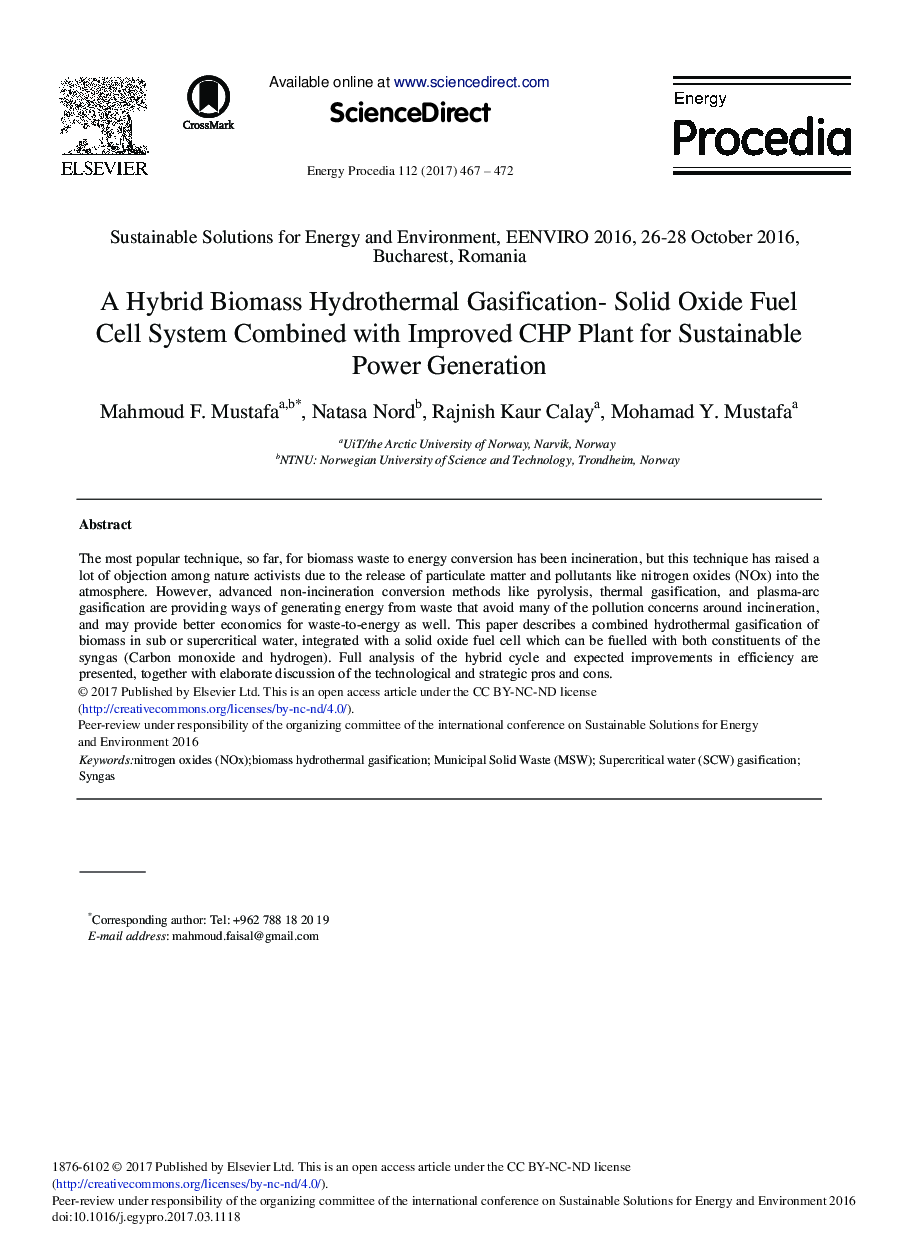| Article ID | Journal | Published Year | Pages | File Type |
|---|---|---|---|---|
| 5445853 | Energy Procedia | 2017 | 6 Pages |
Abstract
The most popular technique, so far, for biomass waste to energy conversion has been incineration, but this technique has raised a lot of objection among nature activists due to the release of particulate matter and pollutants like nitrogen oxides (NOx) into the atmosphere. However, advanced non-incineration conversion methods like pyrolysis, thermal gasification, and plasma-arc gasification are providing ways of generating energy from waste that avoid many of the pollution concerns around incineration, and may provide better economics for waste-to-energy as well. This paper describes a combined hydrothermal gasification of biomass in sub or supercritical water, integrated with a solid oxide fuel cell which can be fuelled with both constituents of the syngas (Carbon monoxide and hydrogen). Full analysis of the hybrid cycle and expected improvements in efficiency are presented, together with elaborate discussion of the technological and strategic pros and cons.
Related Topics
Physical Sciences and Engineering
Energy
Energy (General)
Authors
Mahmoud F. Mustafa, Natasa Nord, Rajnish Kaur Calay, Mohamad Y. Mustafa,
